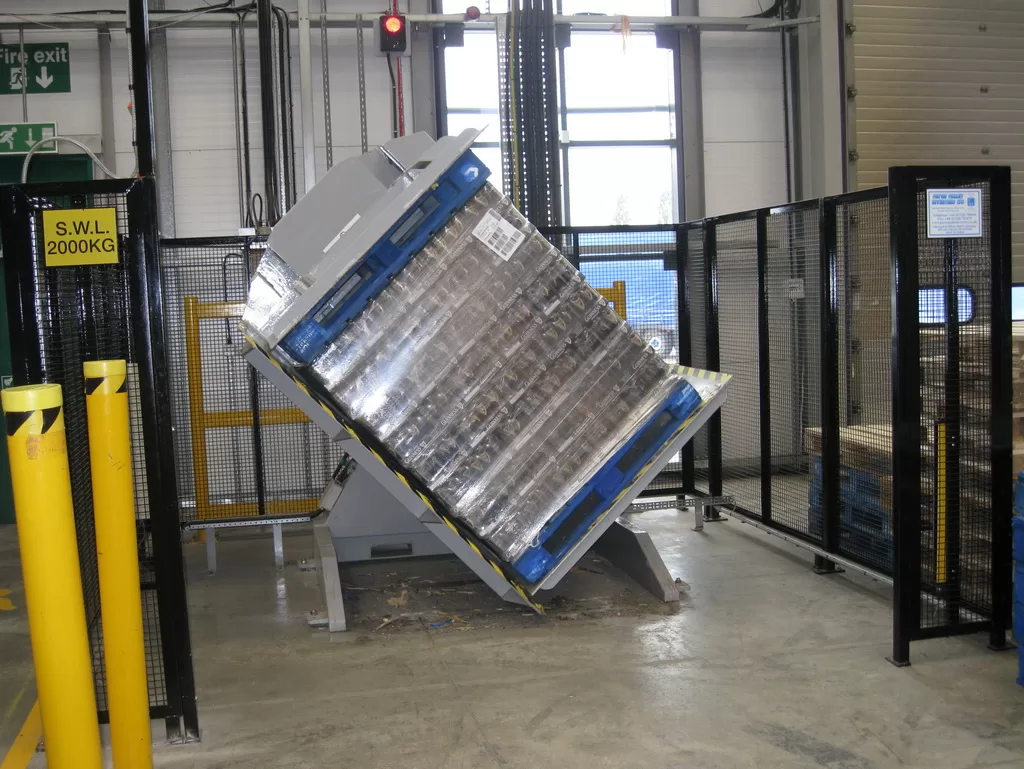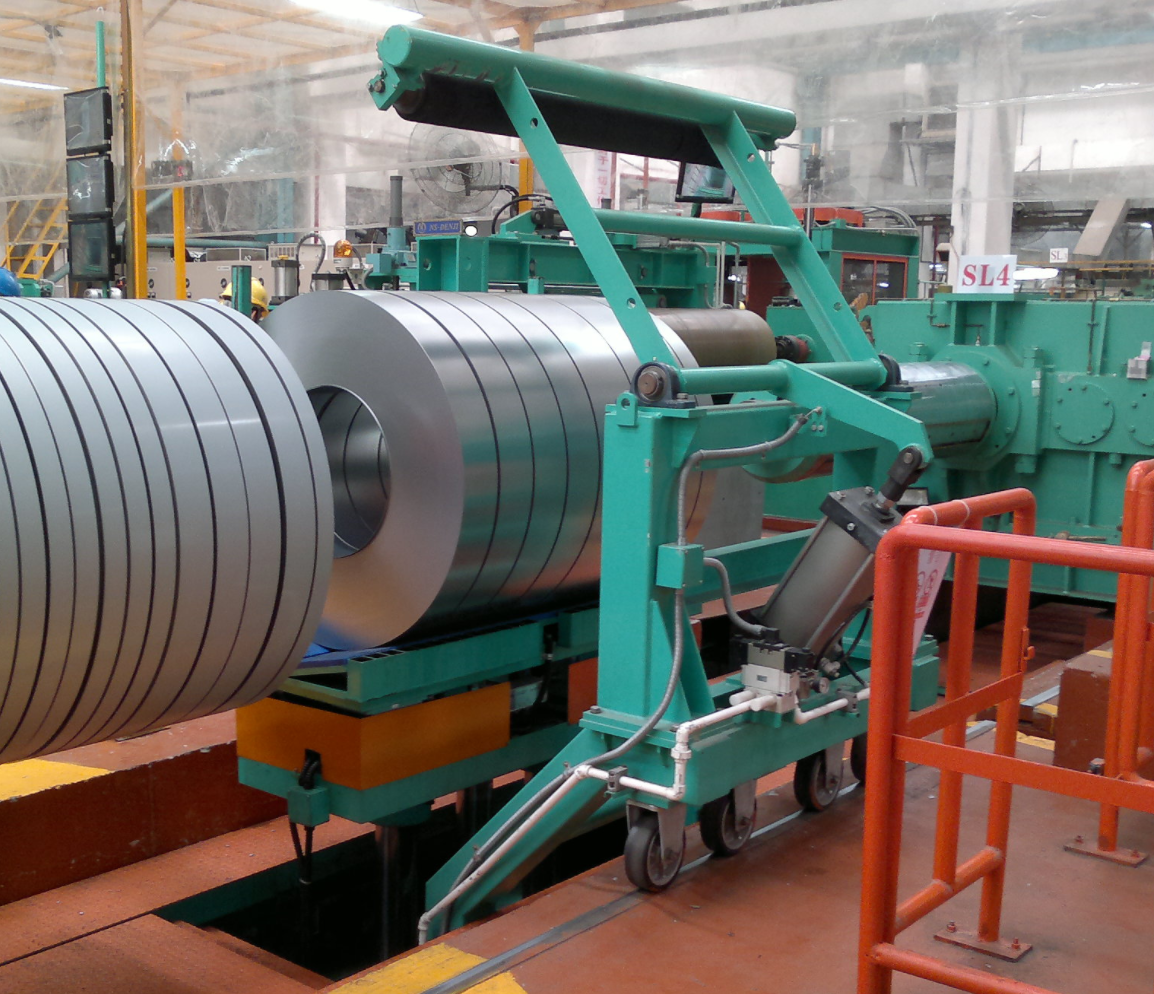Are you contemplating upgrading your steel coil packing line but find yourself wrestling with the financial justification? Many steel manufacturers and processors face this dilemma: how to accurately measure the return on investment (ROI) for such a significant capital expenditure. The good news is, with a structured approach, calculating the ROI for a steel coil packing line is not only feasible but crucial for making informed decisions. By meticulously analyzing factors like labor savings, reduced material waste, and minimized downtime, you can build a compelling business case for investment and ensure your modernization efforts translate into tangible profitability.
Calculating the ROI for a steel coil packing line implementation involves a comprehensive assessment of initial investment, operational cost savings, and productivity gains. This model helps justify the investment by quantifying benefits such as reduced labor costs, decreased material consumption, minimized downtime, and increased throughput, ultimately demonstrating the financial viability of upgrading your packing line.
This article will serve as your guide to navigate the intricacies of ROI calculation for steel coil packing lines. We’ll break down the key components, provide actionable steps, and equip you with the knowledge to confidently assess the financial merits of upgrading your steel coil packing operations. Continue reading to unlock the secrets to data-driven decision-making and transform your packing line into a profit center.
Decoding Initial Investment Costs for Steel Coil Packing Lines
Investing in a new steel coil packing line represents a substantial capital outlay. Understanding the full spectrum of initial costs is paramount for an accurate ROI calculation. Overlooking even seemingly minor expenses can skew your projections and lead to inaccurate financial assessments, potentially jeopardizing your investment decisions. Therefore, a detailed breakdown of all upfront expenditures is the crucial first step in building a robust ROI model.
The initial investment for a steel coil packing line encompasses more than just the machinery purchase price. It includes equipment costs, installation fees, staff training, and necessary facility modifications. A comprehensive ROI calculation must account for all these elements to provide an accurate financial picture of the upgrade project.
To truly understand the financial commitment, we must dissect the anatomy of initial investment costs. Let’s delve deeper into each component and uncover the hidden costs often overlooked.
Breaking Down the Upfront Investment: A Detailed Cost Analysis
The initial investment isn’t just the price tag of the packing line itself. It’s a multifaceted figure comprising several key elements. Accurately accounting for each of these ensures a realistic and reliable ROI projection.
1. Equipment Acquisition Costs: The Core Investment
This is the most obvious cost component, representing the purchase price of the steel coil packing line machinery. However, even within this category, nuances exist.
- Base Machinery Cost: This is the fundamental price of the standard packing line configuration.
- Customization and Options: Steel coil packing lines are often tailored to specific plant layouts and coil dimensions. Custom features, such as specialized conveyors, strapping heads for varying coil widths, or automated labeling systems, add to the base cost.
- Ancillary Equipment: Don’t forget peripheral equipment essential for the line’s operation. This might include:
- Coil tilters or manipulators for efficient coil handling.
- Weighing systems integrated into the line.
- Safety guarding and light curtains.
- Programmable Logic Controllers (PLCs) and Human-Machine Interfaces (HMIs) for line control and monitoring.
2. Installation and Commissioning Expenses: Setting Up for Success
Bringing the machinery into your facility and making it operational incurs significant costs beyond the purchase price.
- Transportation: Shipping heavy machinery requires specialized transport, adding freight charges, insurance, and potential customs duties if importing equipment.
- Site Preparation: Your facility might need modifications to accommodate the new packing line. This could involve:
- Reinforcing the floor to bear the weight of the machinery and steel coils.
- Modifying existing layouts, including dismantling old equipment and reconfiguring material flow paths.
- Providing necessary utilities hookups (electrical power, compressed air, hydraulic lines).
- Installation Labor: Specialized technicians are usually required for mechanical and electrical installation, commissioning, and calibration of the packing line. Labor costs include hourly rates, travel expenses, and potential overtime.
- Testing and Calibration: Rigorous testing and calibration are essential to ensure the line operates according to specifications and safety standards. This phase involves material costs for test runs and technician time.
3. Training and Onboarding: Empowering Your Workforce
New equipment necessitates training your personnel to operate and maintain it effectively. This is an investment in human capital that directly impacts the ROI.
- Operator Training: Operators need to be trained on the HMI, control systems, safety procedures, and routine maintenance tasks. Training costs include instructor fees, training materials, and potentially lost production time during training.
- Maintenance Staff Training: Maintenance technicians require in-depth training on the new machinery’s mechanics, electronics, and software for preventative and corrective maintenance. This can involve vendor-led training programs or specialized external courses.
- Production Downtime for Training: Training often requires temporary shutdowns or reduced production rates, representing an indirect cost that should be factored in.
4. Facility Modifications and Infrastructure Upgrades: Preparing the Ground
Beyond site preparation directly related to installation, broader facility upgrades might be necessary to maximize the benefits of the new packing line.
- Space Optimization: Reorganizing the plant layout to improve material flow to and from the packing line can enhance overall efficiency. This might involve internal construction or reconfiguration costs.
- Upgraded Utilities: The new packing line might demand increased electrical capacity or compressed air volume, requiring upgrades to your facility’s utility infrastructure.
- Safety Enhancements: Implementing enhanced safety measures, like upgraded safety barriers, emergency stop systems, or improved lighting around the new line, are essential investments.
To illustrate the comprehensive nature of initial investment, consider the following hypothetical cost breakdown for a medium-sized steel coil packing line implementation:
| Cost Category | Estimated Cost Range | Notes |
|---|---|---|
| 1. Equipment Acquisition | $250,000 – $500,000 | Varies with line complexity, automation level, and customization. |
| Base Machinery | $200,000 – $400,000 | |
| Customization & Options | $50,000 – $100,000 | |
| Ancillary Equipment | $20,000 – $50,000 | |
| 2. Installation & Commissioning | $50,000 – $100,000 | Site complexity and distance impact costs. |
| Transportation | $10,000 – $20,000 | |
| Site Preparation | $15,000 – $30,000 | |
| Installation Labor | $20,000 – $40,000 | |
| Testing & Calibration | $5,000 – $10,000 | |
| 3. Training & Onboarding | $10,000 – $30,000 | Depends on training depth and number of personnel. |
| Operator Training | $5,000 – $15,000 | |
| Maintenance Training | $5,000 – $15,000 | |
| 4. Facility Modifications | $20,000 – $50,000 | Can be higher for significant layout changes or utility upgrades. |
| Space Optimization | $10,000 – $20,000 | |
| Utility Upgrades | $5,000 – $15,000 | |
| Safety Enhancements | $5,000 – $15,000 | |
| Total Initial Investment | $330,000 – $680,000 | This is a broad estimate; accurate quotes are crucial for your project. |
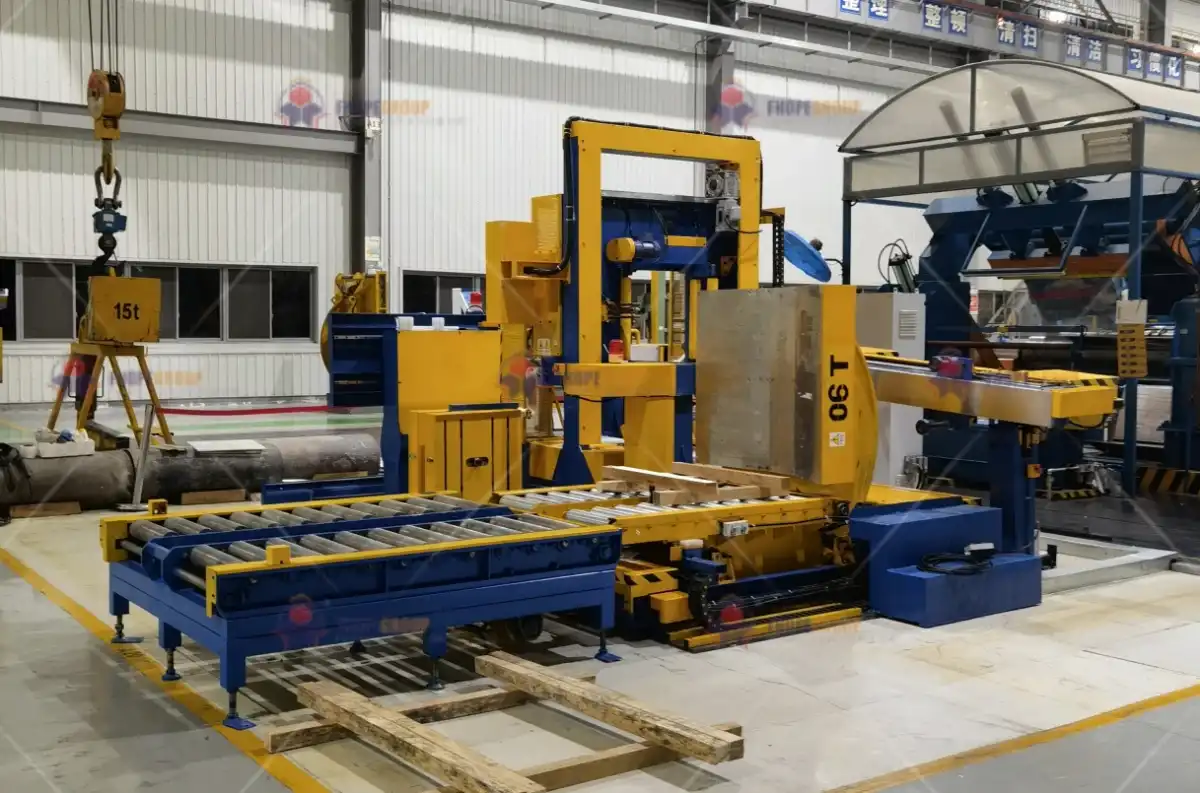
By meticulously accounting for each of these cost categories, you establish a solid foundation for your ROI calculation. The next critical step is to quantify the operational cost savings that this investment will generate.
Quantifying Operational Cost Savings: The Profitability Engine
The true financial benefit of a steel coil packing line upgrade lies in its ability to generate ongoing operational cost savings. These savings, realized year after year, are the engine that drives a positive ROI. Identifying and accurately quantifying these savings is crucial for demonstrating the long-term financial viability of your investment.
Operational cost savings from a steel coil packing line primarily stem from reduced labor requirements, decreased material waste, lower maintenance expenses, and improved energy efficiency. Calculating these savings provides the numerator for your ROI equation, showcasing the ongoing financial benefits.
Let’s explore the key areas where a modern steel coil packing line delivers significant operational cost reductions.
Unlocking Efficiency: Key Areas of Operational Savings
A well-designed and automated steel coil packing line is engineered to streamline operations, minimize waste, and optimize resource utilization. This translates directly into tangible cost savings across several fronts.
1. Labor Cost Reduction: Automation’s Impact
Manual steel coil packing is labor-intensive, requiring multiple operators for tasks like strapping, wrapping, and handling. Automation significantly reduces this reliance on manual labor.
- Reduced Manpower: Automated lines require fewer operators to manage the packing process. Tasks like coil feeding, strapping, wrapping, and discharge become automated, minimizing manual intervention.
- Lower Labor Costs Per Coil: With reduced manpower, the labor cost associated with packing each coil decreases significantly. Calculate the fully loaded cost (wages + benefits) of each operator involved in the current manual process and compare it to the projected labor cost per coil with automation.
- Shift in Labor Roles: While reducing the number of manual laborers, automation may create new, higher-skilled roles for technicians to maintain and oversee the automated line. Factor in the cost of these new roles while calculating net labor savings.
2. Material Waste Reduction: Minimizing Consumption
Manual packing often leads to inconsistent material usage and over-packaging. Automated lines optimize material application, minimizing waste.
- Optimized Strapping and Wrapping: Automated systems apply strapping and wrapping materials with precision, using only the necessary amount. This eliminates over-strapping and excessive wrapping layers common in manual processes.
- Reduced Material Damage: Automated handling minimizes coil damage during packing, reducing the need for rework or material write-offs due to damaged packaging.
- Lower Material Procurement Costs: Reduced material consumption translates directly into lower procurement costs for strapping, wrapping film, edge protectors, and other packing consumables. Analyze your current material consumption per coil and project the reduction achievable with an automated line.
3. Maintenance Expense Minimization: Reliability and Efficiency
While new equipment requires maintenance, modern automated lines are often designed for greater reliability and easier maintenance compared to older, manually operated systems.
- Predictive Maintenance Capabilities: Advanced packing lines often incorporate sensors and diagnostic tools that enable predictive maintenance. Identifying potential issues early allows for proactive maintenance, preventing costly breakdowns and minimizing downtime.
- Reduced Downtime Maintenance: Automated systems, when properly maintained, generally experience less frequent breakdowns compared to manual systems prone to human error and wear and tear. Reduced downtime translates to lower maintenance labor costs and increased production uptime (discussed in the next section).
- Standardized Parts and Easier Diagnostics: Modern equipment often utilizes standardized components and user-friendly diagnostic interfaces, simplifying maintenance procedures and reducing repair times.
4. Energy Efficiency Gains: Sustainable Savings
Modern electric motors and automated control systems in new packing lines are typically more energy-efficient than older pneumatic or hydraulic systems and manual processes.
- Energy-Efficient Motors and Drives: Newer electric motors and variable frequency drives (VFDs) consume less energy compared to older motor technologies. Automated systems also optimize motor operation, running them only when needed.
- Reduced Compressed Air Consumption: Automated lines can minimize or eliminate reliance on compressed air, a significant energy consumer in many industrial facilities. Electric strapping and wrapping heads replace pneumatic alternatives.
- Lower Utility Bills: Reduced energy consumption directly translates to lower electricity bills, contributing to ongoing operational cost savings. Estimate the energy consumption of your current packing process and compare it to the projected energy usage of the automated line.
To illustrate the potential scale of operational cost savings, let’s consider the following hypothetical example for a steel coil processing plant:
| Savings Category | Current Scenario (Manual) | Projected Scenario (Automated) | Annual Savings | Calculation Basis |
|---|---|---|---|---|
| 1. Labor Costs | $15/coil (4 operators) | $5/coil (1 operator) | $10/coil | Based on 100,000 coils packed annually. |
| Labor Cost per Coil | $1,500,000 | $500,000 | $1,000,000 | |
| 2. Material Waste | $8/coil | $5/coil | $3/coil | Based on 100,000 coils packed annually. |
| Material Cost per Coil | $800,000 | $500,000 | $300,000 | |
| 3. Maintenance Expenses | $50,000/year | $30,000/year | $20,000/year | Estimated reduction due to improved reliability. |
| 4. Energy Consumption | $25,000/year | $15,000/year | $10,000/year | Estimated reduction due to energy-efficient motors. |
| Total Annual Savings | – | – | $1,330,000 | Sum of savings from labor, material, maintenance, energy. |

These figures are illustrative, and your actual savings will depend on your specific operational context. However, this example highlights the significant potential for cost reduction across multiple areas, making a compelling case for the financial benefits of automated steel coil packing. Beyond cost savings, increased productivity and revenue generation further amplify the ROI.
Amplifying Revenue and Productivity: The Growth Multiplier
While operational cost savings form a crucial part of the ROI equation, the revenue-generating potential of a steel coil packing line upgrade is equally significant. Enhanced productivity, reduced downtime, and improved product quality contribute directly to increased throughput and customer satisfaction, driving revenue growth and maximizing the return on your investment.
Beyond cost reduction, a steel coil packing line boosts revenue through increased throughput, minimized downtime, and enhanced product quality. These factors lead to higher production capacity, improved customer satisfaction, and the ability to capture new market opportunities, all contributing to a stronger ROI.
Let’s examine how a modern packing line acts as a catalyst for revenue amplification.
Driving Growth: Productivity and Revenue Enhancements
An efficient steel coil packing line is not just about saving costs; it’s about unlocking your production capacity and driving revenue expansion. The improvements in productivity and product quality translate directly into tangible business growth.
1. Increased Throughput and Production Capacity: Packing More Coils, Faster
Automated packing lines significantly accelerate the packing process, allowing you to handle a higher volume of steel coils in the same timeframe.
- Faster Packing Cycles: Automated systems perform strapping, wrapping, and handling operations much faster than manual processes. This reduces the cycle time per coil, increasing the number of coils packed per hour.
- Higher Production Volume: Increased packing speed translates directly to higher overall production throughput. You can process more coils, fulfill larger orders, and potentially reduce lead times, enhancing customer satisfaction.
- Ability to Meet Increased Demand: With a higher production capacity, you can confidently respond to surges in customer demand and capture new market opportunities that might have been unattainable with a slower manual packing process. Quantify the potential increase in coils packed per shift or per year and project the corresponding revenue increase.
2. Downtime Reduction: Maximizing Uptime and Output
Downtime in a packing line, whether due to breakdowns, changeovers, or maintenance, directly impacts production output and revenue. Automated lines minimize downtime, maximizing your operational hours.
- Reduced Breakdown Frequency: As discussed earlier, modern automated lines are designed for higher reliability and often incorporate predictive maintenance features, minimizing unexpected breakdowns.
- Faster Changeovers: Automated systems can often be programmed for quick changeovers between different coil sizes or packing configurations, reducing downtime associated with product variations.
- Increased Production Uptime: Minimized downtime translates directly to increased production uptime. Calculate the current downtime costs associated with your manual packing process and project the reduction in downtime and the corresponding revenue gain with an automated line.
3. Improved Product Quality and Customer Satisfaction: Building Brand Loyalty
Consistent and high-quality packing enhances product presentation, reduces damage during transit, and improves customer perception of your steel coils.
- Consistent Packing Quality: Automated systems ensure consistent strapping tension, wrapping tightness, and overall packing quality for every coil. This eliminates variations inherent in manual packing, leading to a more professional and reliable product presentation.
- Reduced Product Damage During Shipping: Proper and consistent packing minimizes the risk of coil damage during handling and transportation. Reduced damage claims and product returns improve customer satisfaction and reduce associated costs.
- Enhanced Brand Image and Customer Loyalty: High-quality packing contributes to a positive brand image and enhances customer perception of your products. Satisfied customers are more likely to become repeat customers, driving long-term revenue growth. While difficult to directly quantify, consider the long-term value of enhanced customer loyalty and brand reputation.
Consider the following hypothetical example of revenue amplification for a steel coil processing plant upgrading to an automated packing line:
| Revenue Enhancement Category | Current Scenario (Manual) | Projected Scenario (Automated) | Annual Revenue Increase | Calculation Basis |
|---|---|---|---|---|
| 1. Increased Throughput | 80,000 coils/year | 100,000 coils/year | 20,000 coils/year | 25% increase in packing capacity. |
| Revenue per Coil | $50/coil | $50/coil | $50/coil | Average selling price per coil. |
| Additional Revenue | – | – | $1,000,000 | 20,000 additional coils x $50/coil. |
| 2. Downtime Reduction | 5% downtime | 1% downtime | 4% uptime increase | 4% of current annual revenue recovered due to uptime gain. |
| Current Annual Revenue | $4,000,000 | $4,000,000 | $4,000,000 | 80,000 coils x $50/coil. |
| Revenue from Uptime | – | – | $160,000 | 4% of $4,000,000. |
| Total Annual Revenue Increase | – | – | $1,160,000 | Sum of revenue increase from throughput and uptime. |
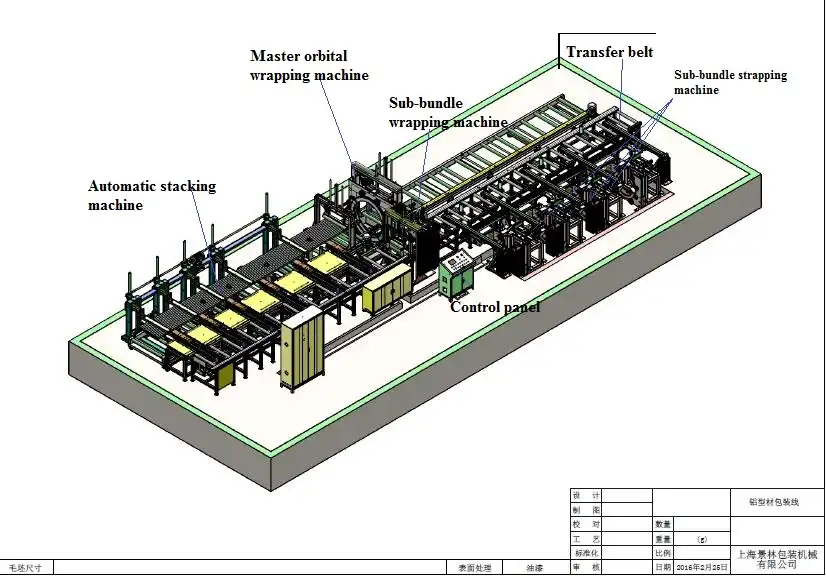
Again, these are illustrative figures. However, they demonstrate the significant revenue amplification potential of a steel coil packing line upgrade. When combined with the operational cost savings, the overall financial picture becomes even more compelling, solidifying the ROI justification.
Calculating the ROI and Payback Period: The Financial Verdict
Having meticulously quantified both the initial investment costs and the ongoing operational savings and revenue gains, we now arrive at the crucial step: calculating the Return on Investment (ROI) and the Payback Period. These metrics provide the ultimate financial verdict on your steel coil packing line upgrade project.
The ROI calculation synthesizes all the quantified benefits and costs into a clear percentage representing the return on your investment. The payback period indicates how quickly the initial investment will be recouped through accumulated savings and revenue gains. These metrics are essential for final investment justification.
Let’s put all the pieces together and perform the final ROI and Payback Period calculations.
Putting It All Together: ROI and Payback Formulas
The formulas for ROI and Payback Period are straightforward, utilizing the data we’ve compiled in the previous sections.
1. Return on Investment (ROI) Formula:
The ROI formula expresses the profitability of your investment as a percentage. A higher ROI indicates a more financially attractive investment.
ROI = [(Total Annual Benefits – Total Annual Costs) / Initial Investment] x 100
Where:
- Total Annual Benefits: Sum of annual operational cost savings (labor, material, maintenance, energy) + annual revenue increase (throughput, uptime).
- Total Annual Costs: In this context, we primarily consider ongoing annual maintenance and potential consumable costs that might increase with higher throughput (though material savings should generally outweigh this). For simplicity in initial ROI, often annual costs are considered negligible compared to benefits in these equipment upgrades. For a more nuanced long-term ROI, include projected annual maintenance contracts, replacement part costs, and any incremental consumable increases.
- Initial Investment: Total upfront costs for equipment, installation, training, and facility modifications.
2. Payback Period Formula:
The Payback Period indicates the time it takes to recover your initial investment. A shorter payback period is generally preferred, as it signifies a faster return of capital.
Payback Period (Years) = Initial Investment / Total Annual BenefitsUsing the hypothetical examples from the previous sections, let’s calculate the ROI and Payback Period for our steel coil packing line upgrade:
- Initial Investment (from Section 1): Let’s take the midpoint of the estimated range: ($330,000 + $680,000) / 2 = $505,000
- Total Annual Savings (from Section 2): $1,330,000
- Total Annual Revenue Increase (from Section 3): $1,160,000
- Total Annual Benefits: $1,330,000 + $1,160,000 = $2,490,000
- Assume Negligible Increase in Annual Operating Costs (for initial calculation simplicity)
ROI Calculation:
ROI = [($2,490,000 – $0) / $505,000] x 100 = 493%
Payback Period Calculation:
Payback Period = $505,000 / $2,490,000 = 0.2 years
In this hypothetical scenario, the ROI is a highly attractive 493%, and the payback period is remarkably short at just 0.2 years (approximately 2.4 months). This indicates a very rapid and substantial return on investment.
Important Considerations for ROI Interpretation:
- Discounted Cash Flow: For more sophisticated financial analysis, consider using Discounted Cash Flow (DCF) methods, which account for the time value of money. This is particularly relevant for longer-term investments.
- Sensitivity Analysis: Perform sensitivity analysis by varying key input parameters (e.g., savings percentages, revenue increase estimates, initial investment costs) to understand how the ROI and Payback Period change under different scenarios. This helps assess the robustness of your ROI projection.
- Intangible Benefits: While ROI focuses on quantifiable financial returns, remember to consider intangible benefits like improved employee morale, enhanced safety, and a more modern and efficient operational environment. These factors contribute to the overall value proposition of the investment.
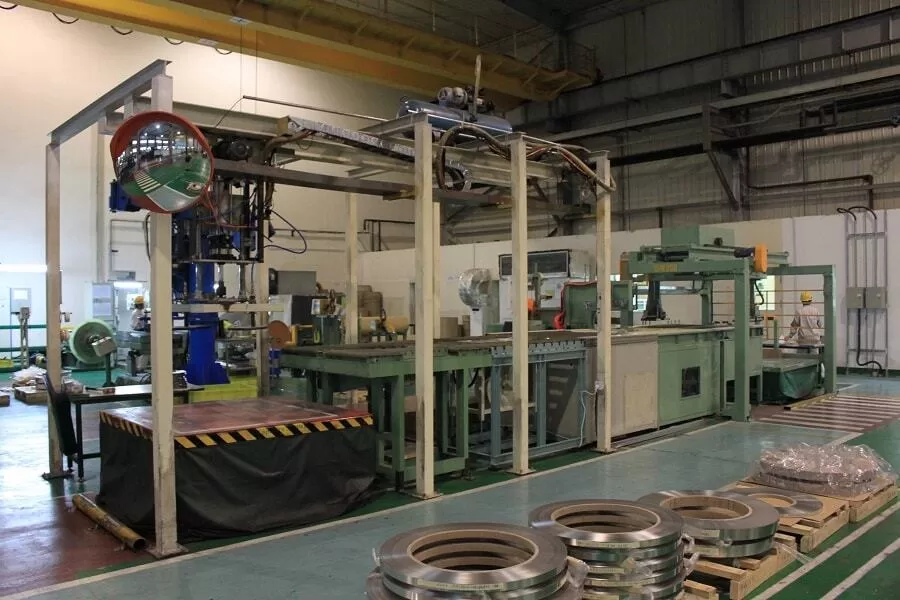
By rigorously calculating the ROI and Payback Period, you equip yourself with the financial data necessary to confidently justify your steel coil packing line implementation project and demonstrate its significant value to stakeholders.
Conclusion
Calculating the ROI for a steel coil packing line implementation is a multi-faceted process, but one that yields crucial insights for informed decision-making. By meticulously dissecting the initial investment, quantifying operational cost savings, and projecting revenue amplification, you can construct a robust ROI model that clearly demonstrates the financial merits of upgrading your packing operations. The impressive ROI and rapid payback period often associated with these upgrades underscore the transformative potential of investing in modern coil packing line technology, turning your packing line from a cost center into a profit-generating asset.



